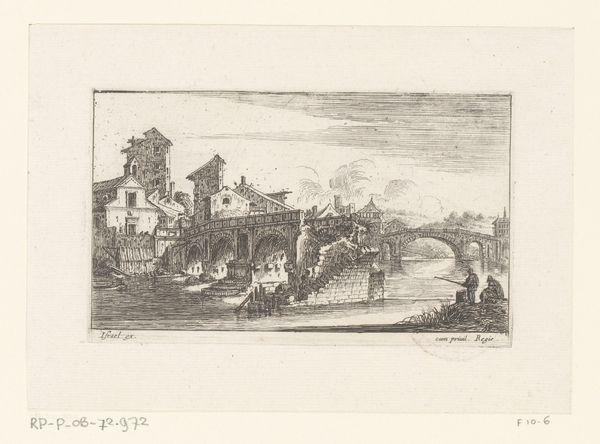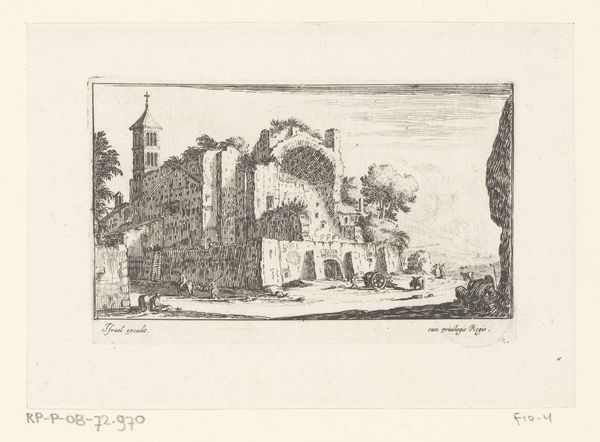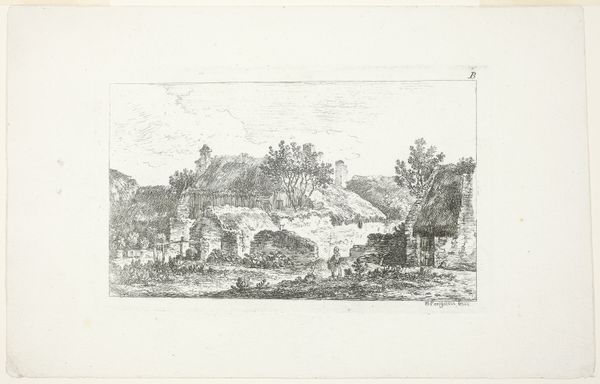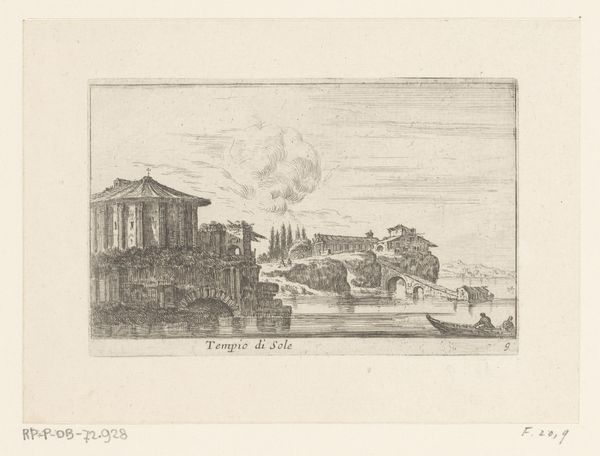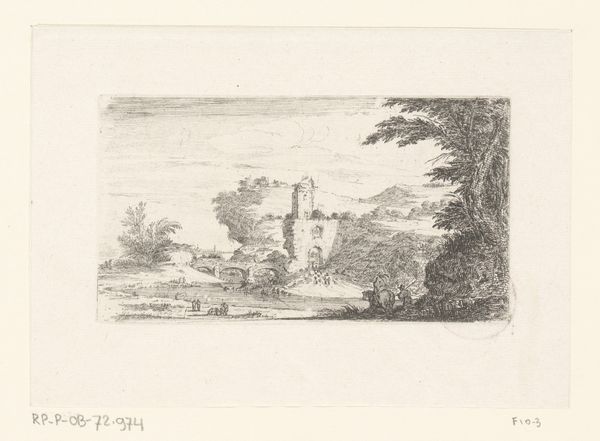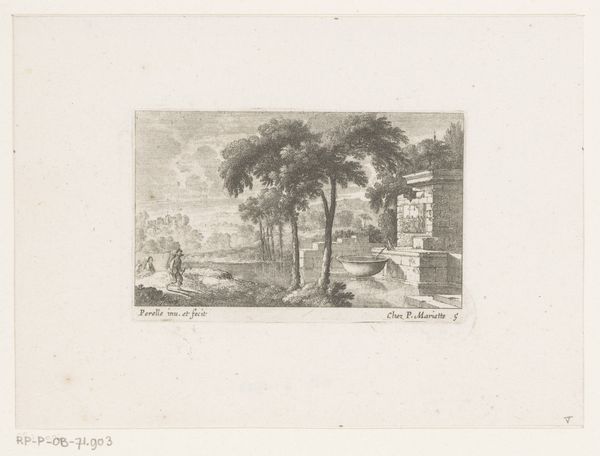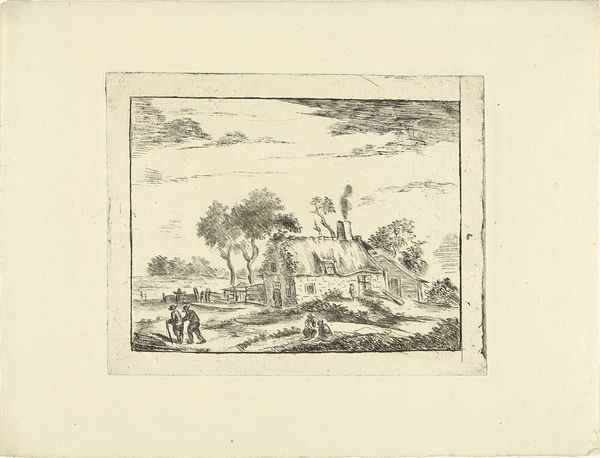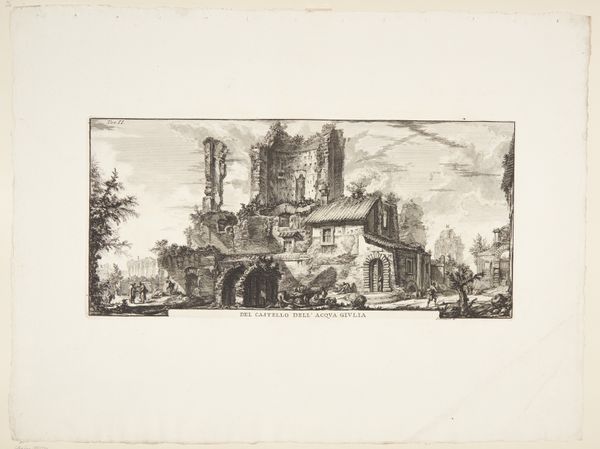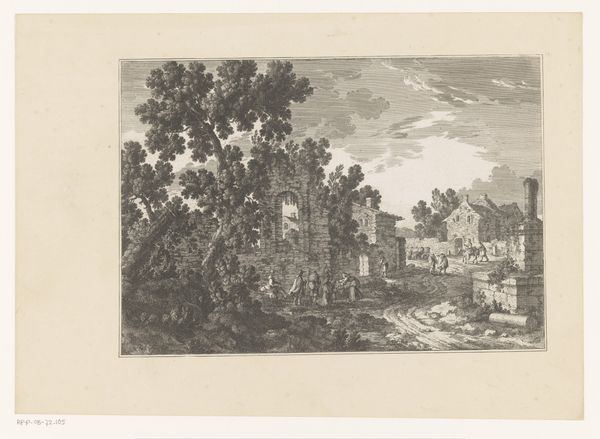
print, etching, engraving
#
baroque
#
ink paper printed
# print
#
etching
#
landscape
#
cityscape
#
engraving
Dimensions: height 72 mm, width 124 mm
Copyright: Rijks Museum: Open Domain
Israel Silvestre made this etching, "View of the Temple of Romulus and Remus," sometime in the 17th century. To make an etching, a metal plate is covered with a waxy ground, then the artist scratches an image into that surface, exposing the metal. The plate is then submerged in acid, which bites into the exposed lines. This creates grooves that hold ink, allowing the image to be printed. Silvestre's skill is evident in the fine lines and textures he achieved, giving depth to the scene. Notice how the etched lines capture the rough texture of the ancient stone, contrasting with the softer, more atmospheric rendering of the sky and distant landscape. While etching was a relatively efficient means of image production, it still demanded considerable expertise. Silvestre, as an etcher, played a crucial role in disseminating visual information in an age before photography, effectively democratizing access to views of distant places and architectural wonders. This print not only reflects artistic skill, but also the growing commercialization of art and the spread of knowledge in early modern Europe.
Comments
No comments
Be the first to comment and join the conversation on the ultimate creative platform.
